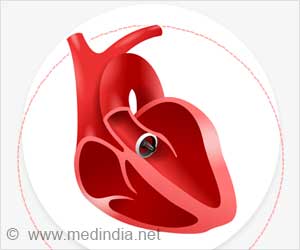About three out of four people who have a stroke for the first time have high blood pressure and atrial fibrillation is present in about one out of five strokes.

‘Many medications used to treat atrial fibrillation (AF) also reduce blood pressure (BP). The relation between BP and mortality is unclear in patients with AF.’





"Our findings suggest that consistency in blood pressure control, beyond the single measurement, is very important, and this appears to be the case across all types of AF patients, irrespective of age, blood pressure history, blood pressure level or clotting risk," said Dr. Proietti. "Interventions aimed at reducing blood pressure variability over the long term, such as optimizing the medications and improving adherence are strongly needed," he added.
The study was a post-hoc analysis of the Atrial Fibrillation Follow-up Investigation of Rhythm Management (AFFIRM) trial, a prospective randomized comparison of two treatment strategies in patients with AF.
In total, 3,843 patients from AFFIRM were included in the current analysis, for whom visit-to-visit variability (VVV) in mean SBP had been recorded at 2, 4, 8 and 12 months and then every 4 months after enrolment.
The patients were categorised into four quartiles based on their mean standard deviation in SBP: those who SBP varied by less than 10.09 mmHg from visit to visit (1st quartile); and then those with variations of10.09-13.85 mmHg (2nd), 13.86-17.33 mmHg (3rd) and ?17.34 mmHg (4th).
Advertisement
Specifically stroke rate progressively increased from 2.5% to 3.0% to 3.8% and 6.2% from the first to the fourth quartile (p<0.001) and similarly, the major bleeding rate was directly related to SBP-VVV quartiles (10.8%, 11.2%, 15.6%, 20.8% respectively; p<0.001).
Advertisement
Dr. Proietti said these outcomes will likely translate to higher mortality in patients in the higher quartiles.
"A better effort in controlling blood pressure in the clinical follow-up is pivotal to obtain a better management of patients with atrial fibrillation and improvement of outcomes", he reiterated.
Source-Eurekalert














